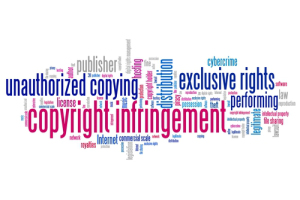Star Athletica: Copyright in Clothing
 {4:12 minutes to read} In a prior post, I discussed Wal-Mart Stores, Inc. v. Samara Bros., Inc.,[1] in which the Supreme Court determined that aesthetic features of a product could not be protected under the trade dress rubric. In that case, the products at issue were children’s clothes, and the Court suggested that rather than rely on trade dress, the designer should instead rely on protection by copyright or design patent.
{4:12 minutes to read} In a prior post, I discussed Wal-Mart Stores, Inc. v. Samara Bros., Inc.,[1] in which the Supreme Court determined that aesthetic features of a product could not be protected under the trade dress rubric. In that case, the products at issue were children’s clothes, and the Court suggested that rather than rely on trade dress, the designer should instead rely on protection by copyright or design patent.
It is axiomatic that “useful articles” are not protectable under copyright,[2] and that only “primarily ornamental” features of an article are protectable under design patents.[3] As discussed here, the Supreme Court has previously ruled, in Mazer v. Stein,[4] that an article can be protectible under both copyright and a design patent.




